Most Affordable Master’s in Data Science for 2025
A data-driven strategy is the name of the game in today’s business landscape and savvy professionals who can extract insights from datasets are in high demand. For those seeking to get their master’s in data science, but are concerned about the hefty investment that often comes with pursuing a graduate degree, Fortune has sorted the best master’s in data science programs by cost.
- Order/Rank
- A - Z
- Arizona
- Connecticut
- Delaware
- District of Columbia
- Florida
- Georgia
- Illinois
- Indiana
- Maryland
- Massachusetts
- Michigan
- Minnesota
- Missouri
- New Jersey
- New York
- North Carolina
- Oklahoma
- Oregon
- Pennsylvania
- Texas
- Virginia
- West Virginia
- Wisconsin
- Ann Arbor, MI
- Atlanta, GA
- Baltimore, MD
- Bloomington, IN
- Boone, NC
- Cambridge, MA
- Charlottesville, VA
- Chicago, IL
- Columbia, MO
- Denton, TX
- East Lansing, MI
- Erie, PA
- Hoboken, NJ
- Huntington, WV
- Lubbock, TX
- Mahwah, NJ
- Milwaukee, WI
- Minneapolis, MN
- New York, NY
- Newark, DE
- Potsdam, NY
- Rochester, NY
- Salem, OR
- Sarasota, FL
- St. Paul, MN
- Stillwater, OK
- Storrs, CT
- Syracuse, NY
- Tucson, AZ
- Washington, DC
- Worcester, MA
*Please note that not all schools offer this specific type of information.

1. University of Delaware
Newark, DE| Acceptance rate | 21.88% |
| Approx. total program cost, out-of-state U.S. residents | $32,070 |
| Graduation rate | 70.00% |
| Retention rate | 87.50% |

2. University of North Texas
Denton, TX| Acceptance rate | 26.61% |
| Approx. total program cost, out-of-state U.S. residents | $32,160 |
| Graduation rate | 91.01% |
| Retention rate | 96.64% |
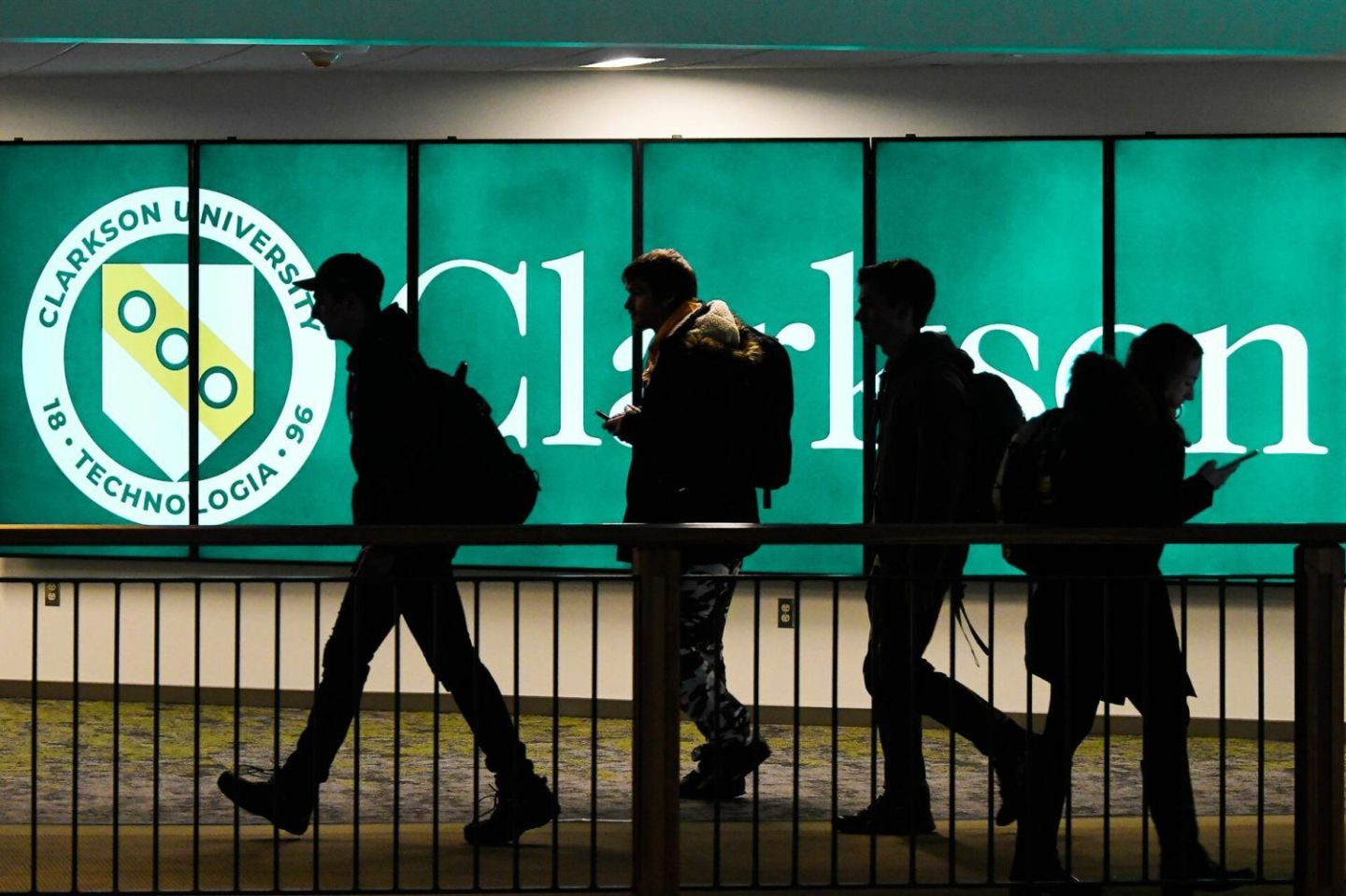
3. Clarkson University
Potsdam, NYClarkson University's data analytics master's features a six-credit capstone and partnerships with local organizations. Two recommendation letters are required, and while standardized tests are recommended, they're not mandatory. International students must demonstrate English proficiency. Students average three years of work experience, with about 25 per core course. Fall applications are due August 25.
| Acceptance rate | 74.09% |
| Approx. total program cost, out-of-state U.S. residents | $36,900 |
| Graduation rate | 80.65% |
| Retention rate | 97.00% |
4. Mercyhurst University
Erie, PA| Acceptance rate | 55.88% |
| Approx. total program cost, out-of-state U.S. residents | $39,000 |
| Graduation rate | DNP |
| Retention rate | 100.00% |
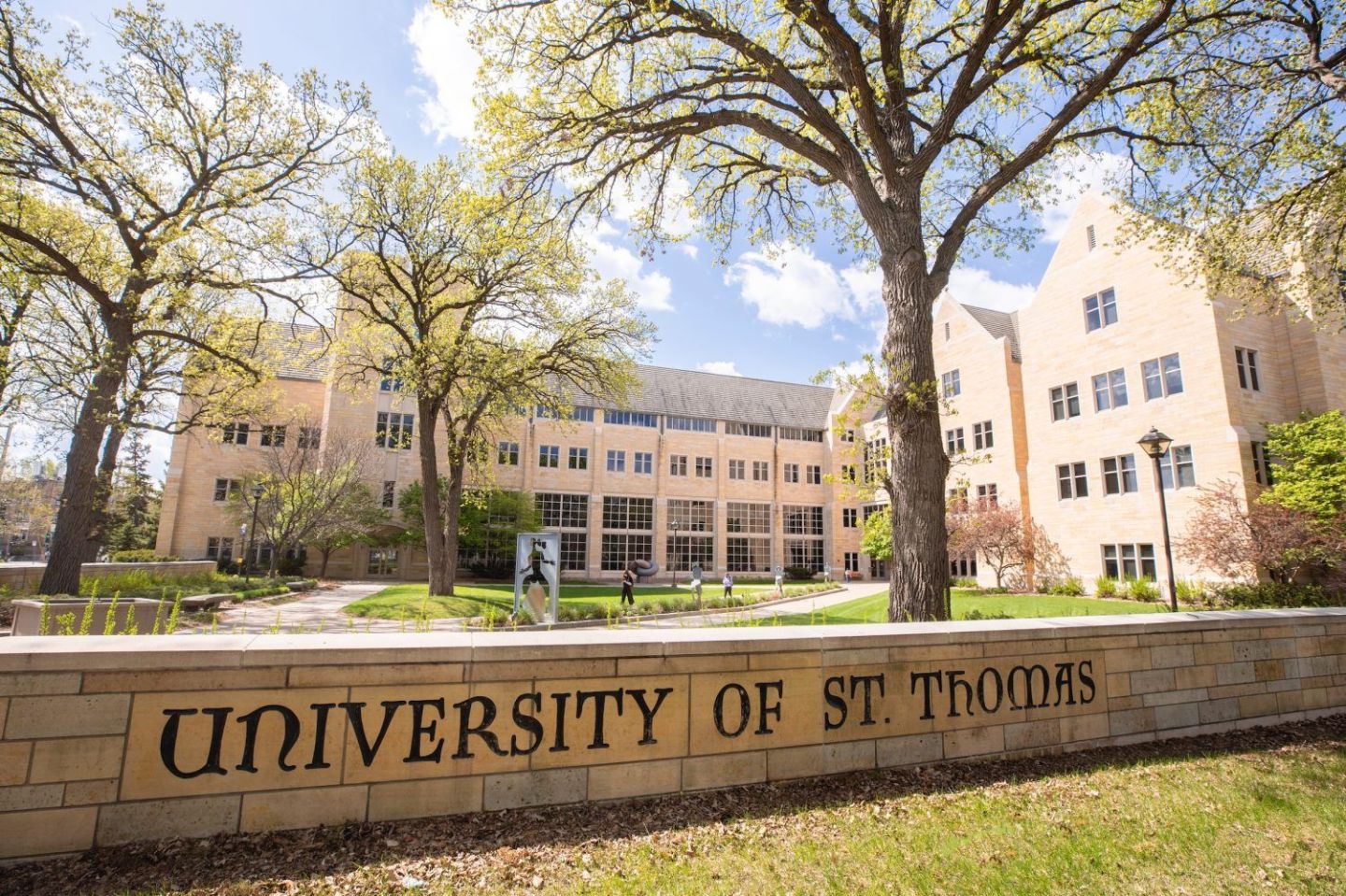
5. University of St. Thomas
St. Paul, MN| Acceptance rate | 56.00% |
| Approx. total program cost, out-of-state U.S. residents | $39,300 |
| Graduation rate | 47.73% |
| Retention rate | 53.33% |

6. Texas Tech University
Lubbock, TX| Acceptance rate | 66.00% |
| Approx. total program cost, out-of-state U.S. residents | $39,504 |
| Graduation rate | 90.00% |
| Retention rate | 96.00% |

7. University of Connecticut
Storrs, CT| Acceptance rate | 55.00% |
| Approx. total program cost, out-of-state U.S. residents | $39,750 |
| Graduation rate | DNP |
| Retention rate | DNP |

8. Michigan State University
East Lansing, MI| Acceptance rate | 20.99% |
| Approx. total program cost, out-of-state U.S. residents | $39,774 |
| Graduation rate | 96.08% |
| Retention rate | 98.04% |
9. Ramapo College Of New Jersey
Mahwah, NJ| Acceptance rate | 70.83% |
| Approx. total program cost, out-of-state U.S. residents | $40,034 |
| Graduation rate | 30.00% |
| Retention rate | 50.00% |

10. University of Minnesota–Twin Cities
Minneapolis, MN| Acceptance rate | 14.00% |
| Approx. total program cost, out-of-state U.S. residents | $40,765 |
| Graduation rate | 69.00% |
| Retention rate | 94.00% |
11. New College of Florida
Sarasota, FL| Acceptance rate | 29.50% |
| Approx. total program cost, out-of-state U.S. residents | $42,100 |
| Graduation rate | 92.00% |
| Retention rate | 92.00% |

12. University of Missouri—Columbia
Columbia, MO| Acceptance rate | 12.65% |
| Approx. total program cost, out-of-state U.S. residents | $43,443 |
| Graduation rate | 90.90% |
| Retention rate | 100.00% |

13. Appalachian State University
Boone, NC| Acceptance rate | 26.46% |
| Approx. total program cost, out-of-state U.S. residents | $44,295 |
| Graduation rate | 95.00% |
| Retention rate | 90.00% |

14. Oklahoma State University
Stillwater, OK| Acceptance rate | 31.48% |
| Approx. total program cost, out-of-state U.S. residents | $45,103 |
| Graduation rate | 93.54% |
| Retention rate | 100.00% |

15. University of Wisconsin-Milwaukee
Milwaukee, WI| Acceptance rate | 45.00% |
| Approx. total program cost, out-of-state U.S. residents | $45,778 |
| Graduation rate | DNP |
| Retention rate | 88.00% |

16. DePaul University
Chicago, IL| Acceptance rate | 54.16% |
| Approx. total program cost, out-of-state U.S. residents | $45,840 |
| Graduation rate | 84.10% |
| Retention rate | 90.53% |

17. Georgia State University
Atlanta, GA| Acceptance rate | 36.96% |
| Approx. total program cost, out-of-state U.S. residents | $47,250 |
| Graduation rate | 92.00% |
| Retention rate | 90.00% |

18. Marshall University
Huntington, WV| Acceptance rate | 76.00% |
| Approx. total program cost, out-of-state U.S. residents | $47,424 |
| Graduation rate | 88.00% |
| Retention rate | 92.00% |

19. Fordham University
New York, NY| Acceptance rate | 64.77% |
| Approx. total program cost, out-of-state U.S. residents | $48,222 |
| Graduation rate | 88.00% |
| Retention rate | 89.00% |

20. New York Institute of Technology
New York, NY| Acceptance rate | 21.70% |
| Approx. total program cost, out-of-state U.S. residents | $48,600 |
| Graduation rate | 80.85% |
| Retention rate | 95.16% |

21. Worcester Polytechnic Institute
Worcester, MA| Acceptance rate | 60.21% |
| Approx. total program cost, out-of-state U.S. residents | $48,600 |
| Graduation rate | 100.00% |
| Retention rate | 88.00% |

22. Indiana University–Bloomington
Bloomington, IN| Acceptance rate | 47.80% |
| Approx. total program cost, out-of-state U.S. residents | $50,730 |
| Graduation rate | 100% |
| Retention rate | 97.00% |

23. Willamette University
Salem, OR| Acceptance rate | 38.00% |
| Approx. total program cost, out-of-state U.S. residents | $53,865 |
| Graduation rate | 94.00% |
| Retention rate | 96.00% |

24. University of Arizona
Tucson, AZ| Acceptance rate | 21.80% |
| Approx. total program cost, out-of-state U.S. residents | $56,670 |
| Graduation rate | 100.00% |
| Retention rate | 100.00% |

25. Syracuse University
Syracuse, NY| Acceptance rate | 51.00% |
| Approx. total program cost, out-of-state U.S. residents | $59,703 |
| Graduation rate | DNP |
| Retention rate | DNP |
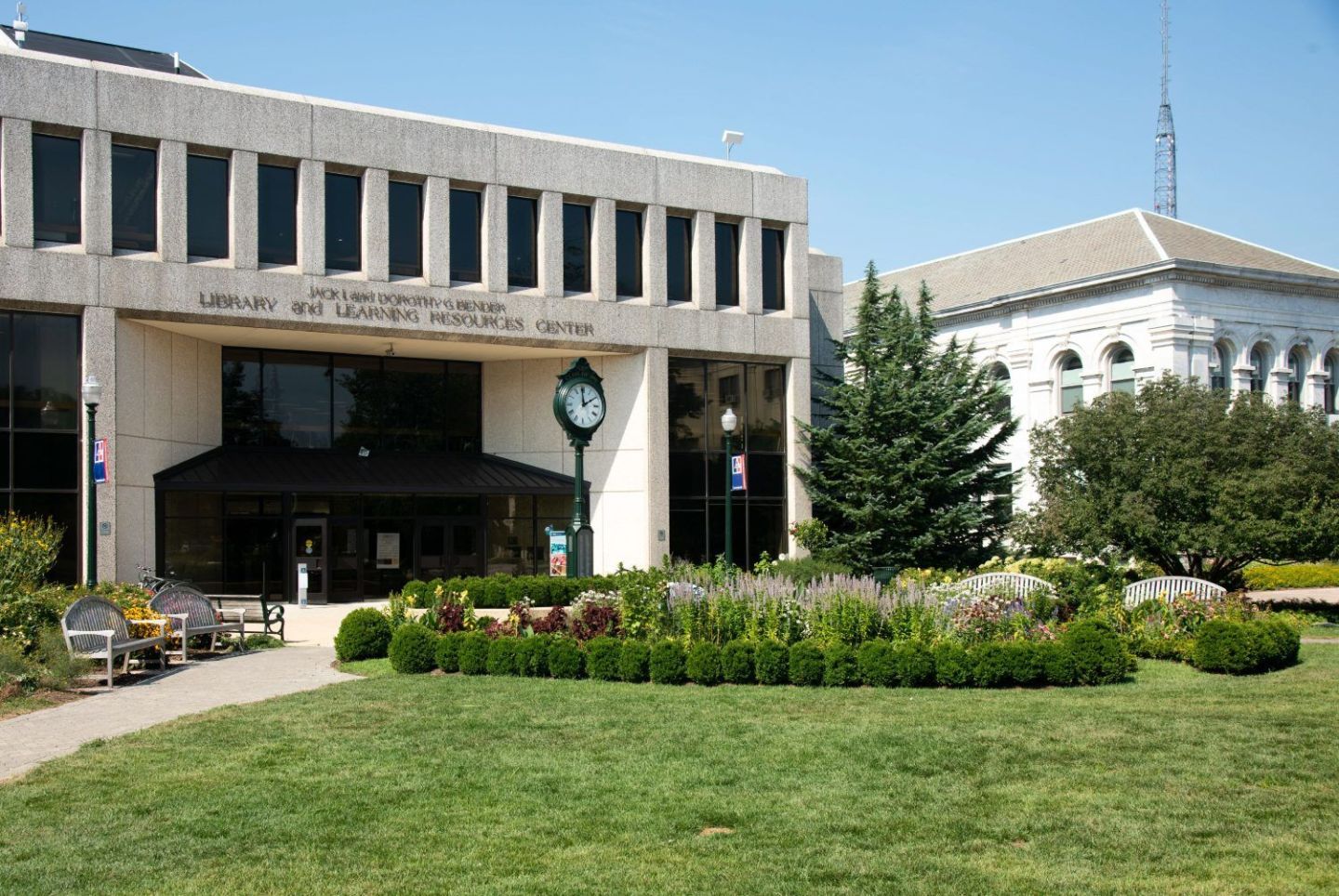
26. American University
Washington, DC| Acceptance rate | 86.88% |
| Approx. total program cost, out-of-state U.S. residents | $60,000 |
| Graduation rate | 83.87% |
| Retention rate | 76.41% |
27. Stevens Institute of Technology
Hoboken, NJ| Acceptance rate | 54.00% |
| Approx. total program cost, out-of-state U.S. residents | $63,462 |
| Graduation rate | 45.1% |
| Retention rate | 97.80% |

28. University of Chicago
Chicago, IL| Acceptance rate | 40.00% |
| Approx. total program cost, out-of-state U.S. residents | $71,604 |
| Graduation rate | 98.00% |
| Retention rate | 99.00% |
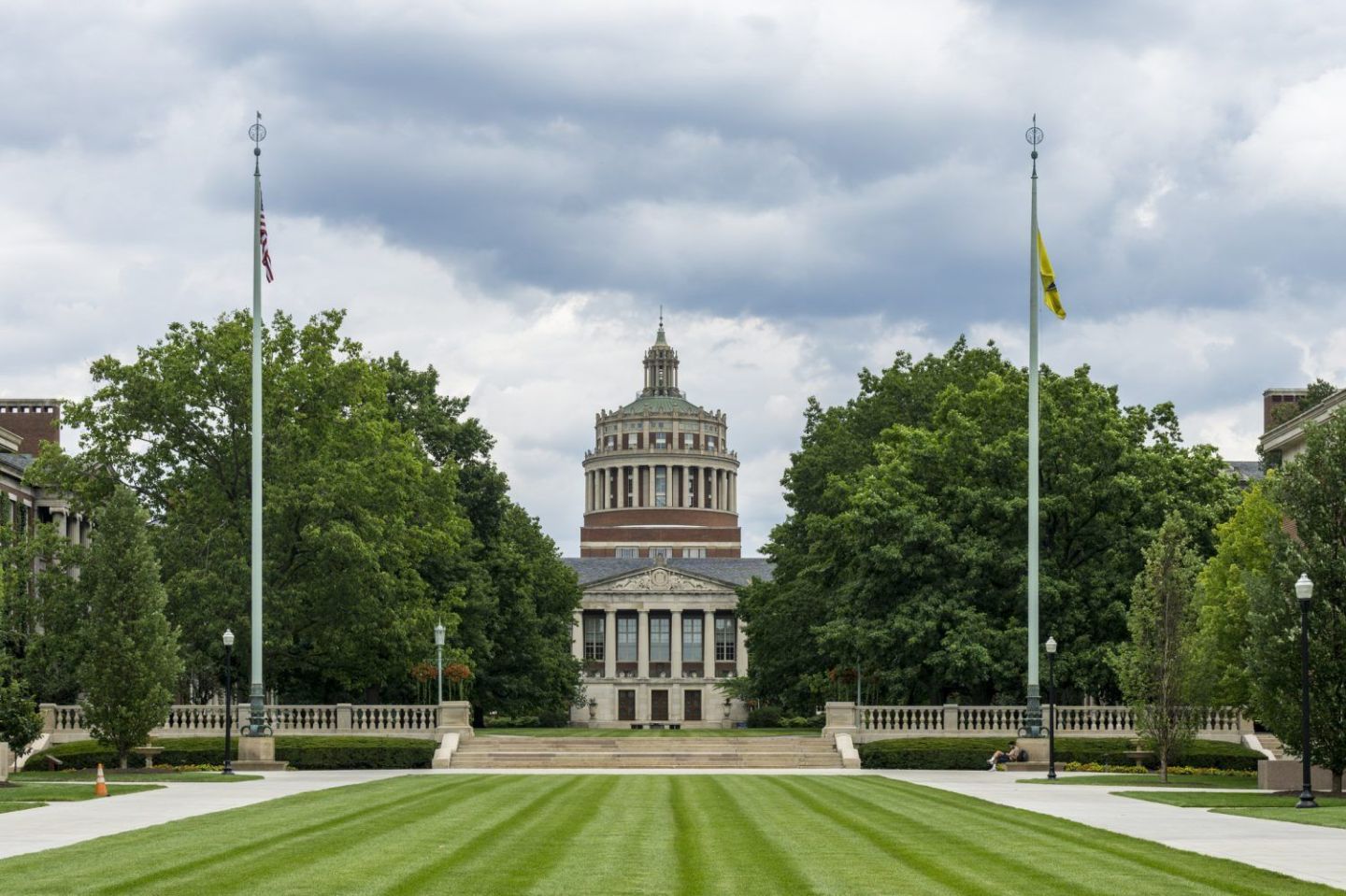
29. University of Rochester
Rochester, NY| Acceptance rate | 29.72% |
| Approx. total program cost, out-of-state U.S. residents | $73,017 |
| Graduation rate | 98.21% |
| Retention rate | 97.83% |

30. Rochester Institute of Technology
Rochester, NY| Acceptance rate | 48.80% |
| Approx. total program cost, out-of-state U.S. residents | $73,890 |
| Graduation rate | 79.00% |
| Retention rate | 98.00% |

31. New York University
New York, NY| Acceptance rate | 28.63% |
| Approx. total program cost, out-of-state U.S. residents | $85,572 |
| Graduation rate | 92.57% |
| Retention rate | 98.70% |

32. University of Virginia
Charlottesville, VA| Acceptance rate | 34.85% |
| Approx. total program cost, out-of-state U.S. residents | $88,380 |
| Graduation rate | 94.15% |
| Retention rate | 95.45% |
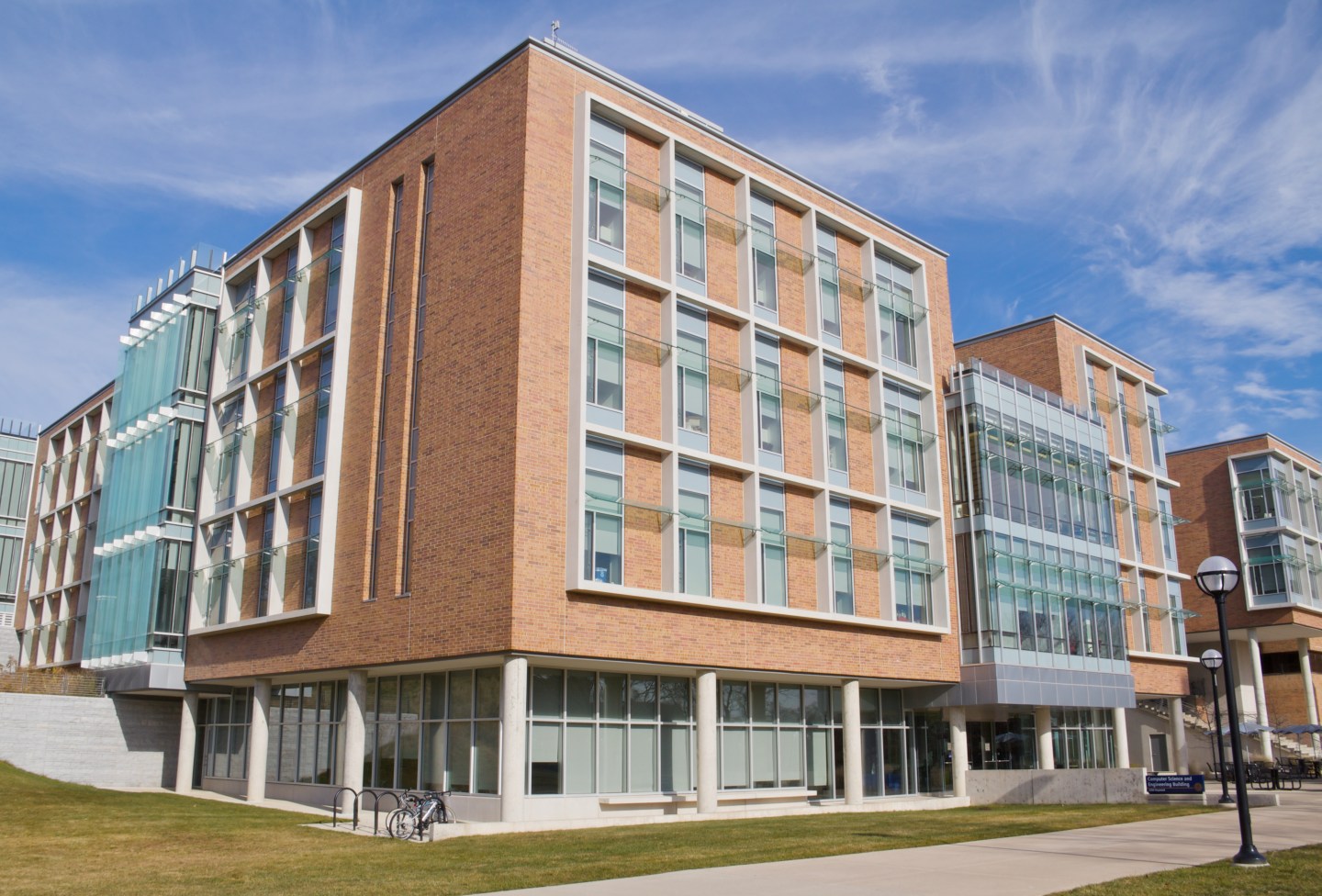
33. University of Michigan--Ann Arbor
Ann Arbor, MI| Acceptance rate | 14.00% |
| Approx. total program cost, out-of-state U.S. residents | $88,750 |
| Graduation rate | 95.00% |
| Retention rate | 96.00% |

34. Harvard University
Cambridge, MA| Acceptance rate | 6.19% |
| Approx. total program cost, out-of-state U.S. residents | $95,436 |
| Graduation rate | 99.00% |
| Retention rate | 99.00% |
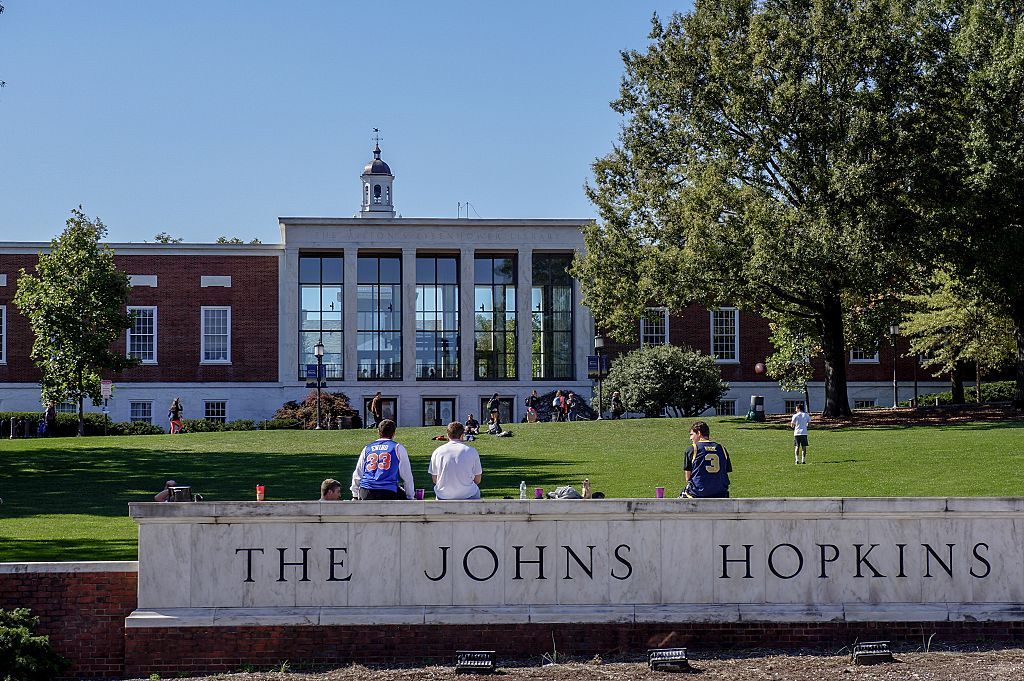
35. Johns Hopkins University
Baltimore, MD| Acceptance rate | 39.00% |
| Approx. total program cost, out-of-state U.S. residents | $129,460 |
| Graduation rate | 100.00% |
| Retention rate | 100.00% |
Methodology
Data science programs are on the rise, and Fortune reached out to more than 90 schools to participate in this year’s ranking. Thirty-five universities filled out our data questionnaire, which asked for information on schools’ admissions policies, admitted students, and graduates. This most affordable list is based solely on the approximate total program cost for out-of-state U.S. residents.
Learn more: Read Fortune’s master’s in data science methodology.
Data science career paths
What is a master’s in data science?
A master's in data science is an advanced degree that bridges mathematics, statistics, and computer science. This program equips students with skills in computer programming languages, applied statistics, database systems, and machine learning. Whether pursued online or in-person, these programs offer identical curricula taught by the same faculty, preparing graduates for diverse tech roles.
Data science curriculum and skills taught
Data science master's programs offer a comprehensive curriculum that blends statistical and computational methods. The coursework emphasizes real-world applications while adopting a multidisciplinary approach that incorporates elements from statistics, computer science, and law. Beyond technical skills, students develop crucial soft skills such as problem-solving, critical thinking, and communication, with a particular focus on data ethics.
Core coursework at many data science programs covers the following topics:
- Cloud computing
- Data engineering
- Data mining
- Data visualization
- Information ethics
- Machine learning
- Research design
- Statistical analysis
Students gain proficiency in software like Alteryz, Databricks, and Power BI, along with programming languages such as Python, R, and SQL.
Data science project-based learning
Project-based learning is a cornerstone of top data science programs, providing students with hands-on experience in real-world scenarios. Many programs culminate in a capstone or thesis project tailored to students' interests, with over half of the programs in Fortune's ranking including this requirement.
Data science specializations and concentrations
Concentrations allow students to carve out a niche within the field, enhancing their expertise in specific areas of data science. Each university has unique offerings. Be sure to do your research, as some institutions label them differently or may simply offer many electives that catch your attention. Some examples of concentration offerings include:
- Fundamentals of data science, data acquisition and management, data security, or business applications (Stevens Institute of Technology)
- Artificial intelligence, big data, data & business analytics, data pipelines & platforms, language analytics, project management, or visual analytics (Syracuse University)
- Marketing analytics, advanced data science, health analytics, or cybersecurity analytics (Oklahoma State University)
Admissions information for master’s in data science
While requirements may vary between institutions, most data science graduate programs typically expect:
- A bachelor's degree from an accredited institution
- Relevant work or educational experience in data-related fields
- A personal statement or essay
- Letters of recommendation
- Standardized test scores (GRE or GMAT), if requested
- A data proficiency examination (in some cases)
Many programs have eliminated mandatory GRE scores, shifting focus to other application components, though some may still accept standardized test scores. The average acceptance rate for schools in Fortune's ranking is approximately 42%
GMAT, GRE, and GPA requirements for master’s in data science
Many master’s programs in data science have removed GRE or GMAT score requirements. Applicants may still submit these scores if they believe it strengthens their application. GPA requirements vary by institution, and some programs may waive them for applicants with substantial professional experience. While test score requirements have been relaxed, the admissions process remains competitive. Programs place greater emphasis on other aspects of the application, making it crucial to present a well-rounded and compelling profile.
Which factors drive acceptance into a master's in data science program?
Admissions teams often take a holistic approach when reviewing applications, focusing on:
- Educational background: A strong foundation in data-related fields or quantitative coursework is often preferred.
- Professional experience: Work in data-centric roles can set applicants apart.
- Personal essays: A clear articulation of goals and reasons for choosing the program is highly valued.
How to choose the best master’s degree program in data science for you: Factors to consider beyond rankings
When selecting a program, you should consider a variety of factors alongside their ranking:
- Cost and financial aid: Tuition ranges from under $40,000 to over $80,000, depending on the school.
- Prestige and curriculum: School reputation and course offerings can impact career prospects.
- Program flexibility: Look at start dates, program length, and scheduling options.
- Learning opportunities: Project-based courses and concentrations can enhance skills and employability.
- Networking: Alumni networks and industry connections play a significant role in career advancement.
Start times, schedule, and program length
Many programs offer multiple start dates throughout the year, allowing students to align their education with personal and professional schedules. While most programs take around two years to complete, accelerated and extended options are available, providing flexibility to accommodate diverse timelines.
Project-based learning
Hands-on projects are common in master’s in data science, allowing students to build portfolios that demonstrate practical skills. These opportunities are especially beneficial for career changers as they provide tangible evidence of your skills—something that can be especially resourceful when applying for jobs.
Concentrations
Concentrations within data science programs allow students to tailor their education to career goals and help graduates land roles that may be outside of the traditional data scientist role. Specializations can lead to higher salaries, with roles like data scientist earning up to $170,000 annually and managerial positions exceeding $250,000.
Cost
Tuition for online master’s in data science programs varies widely. Some affordable programs cost less than $40,000, including those at the University of Delaware, University of North Texas, Clarkson University, and Texas Tech University. Conversely, elite institutions like New York University, Harvard University (Paulson), and Johns Hopkins University (Whiting) charge over $80,000 for their programs.
Financial aid opportunities, such as scholarships, assistantships, and employer reimbursement programs, can help offset costs. It's essential to research and apply for available funding to make your degree more affordable.
Network and access to alumni
The size and strength of a program’s alumni network can have a lasting impact on your career. Schools with robust alumni networks often provide mentorship opportunities, industry connections, and job leads. Even online programs foster networking through virtual events and collaborative coursework, making it easier to build meaningful professional relationships.
Careers for master’s in data science graduates
Data science graduates are in high demand across industries, including tech, healthcare, entertainment, and finance. While major employers like Microsoft, IBM, and Meta offer lucrative salaries and benefits, opportunities extend beyond tech giants. Fields like sports analytics, consulting, and pharmaceuticals also rely heavily on data science expertise.
Graduates often receive multiple job offers, with starting salaries exceeding $100,000. According to Glassdoor, mid-level data scientists can earn up to $164,000 annually, while senior roles may command over $200,000 or even $300,000 at top companies.
Financing and scholarships
Several organizations offer financial aid to data science students:
- Association of Computing Machinery (ACM): Provides fellowships with a $15,000 annual stipend for students from underrepresented groups.
- Acxiom Scholarships: Awards $5,000 to U.S.-based students pursuing data science degrees.
- American Statistical Association (ASA): Offers a Pride Scholarship for LGBTQ+ students or allies enrolled in graduate-level data science programs.
- Veteran Benefits: Service members can use Post-9/11 GI Bill benefits to cover tuition, with the Yellow Ribbon Program addressing additional costs.
By exploring scholarships, fellowships, and employer sponsorships, students can reduce the financial burden of earning a master’s degree in data science.
Frequently asked questions
What is data science?
Data science is an interdisciplinary field focused on preparing and analyzing data to uncover insights. It involves designing and implementing data modeling processes, using algorithms, prototypes, predictive models, and custom analyses. This field is ideal for those who enjoy asking questions and building statistical models to predict unknowns.
Is data science in high demand?
Yes, data science is in high demand. With global data expected to reach 181 zettabytes by 2025, the need for skilled data scientists continues to grow. The U.S. Bureau of Labor Statistics (BLS) ranks data science as the third-fastest growing occupation in the nation.
How can I become a data scientist?
Here’s what you can do if you want to become a data scientist:
- Earn an undergraduate degree that develops technical skills like programming or statistics.
- Identify a specific area of data science to specialize in.
- Pursue a master’s degree in data science.
- Highlight relevant experience when applying for roles.
Is a master’s degree in data science worth it?
A master’s degree in data science can be incredibly beneficial. The U.S. Bureau of Labor Statistics projects a 36% job growth rate for data scientists through 2033. Many students secure job offers with salaries of $108,020 or higher before graduating.
How much money can you make in data science?
Data scientists earn an average annual salary of over $100,000. Salaries can vary depending on the company, role, and level of experience.
What is the highest-paying data science job?
According to Glassdoor, the median total pay for data scientists is approximately $164,000. For senior roles at top tech companies, compensation can exceed $200,000 or even $300,000.
What kind of jobs do data scientists do?
Data scientists work across a variety of industries, including tech, entertainment, pharmaceuticals, telecommunications, sports, and consulting. New opportunities are constantly emerging, especially in fields like ethical data usage and cutting-edge technologies.
What is the cheapest way to learn data science?
The cheapest way to learn data science is to take an online course, but you may not get the proper credentials to land a high-paying job. For those seeking a full degree, the University of Delaware has the least expensive master’s in data science program, with total tuition of just over $32,000.
Is a master's in data science worthwhile?
Yes, for those seeking a lucrative career in data science, a master’s degree can be a great way to enhance one’s skills and land a new job or promotion. Graduates of many institutions, including the University of North Texas, New York University, and University of Rochester, report earning median salaries of six figures or more.
How much does a master's of data science cost?
The average master’s in data science costs about $55,000, though the exact price can range from about $32,000 to $129,000, depending on the institution.
